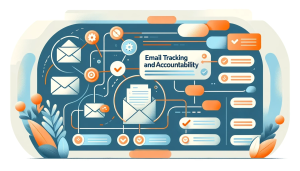If you’ve ever interacted with customer service agents, chances are you’ve heard the phrase “sorry for the inconvenience” at least a dozen times. Apologies are an important part of resolving issues between customers and businesses. However, psychology studies show that “Whether or not conflict resolution occurs generally depends on the perception of the apology as trustworthy, genuine, and sincere by the injured party.”
Unfortunately, “sorry for the inconvenience” falls a bit flat when it comes to apologies. Here are some guidelines for crafting a more effective apology, alternatives to the overused “sorry for the inconvenience,” and tips on ensuring your meaning comes across.
Tips for Stronger Apologies
Be Specific
The phrase “inconvenience” is vague and does not address the specific issue or problem the customer encountered. It may give the impression that the apology is insincere or generic. What specific inconveniences did the customer face due to real or perceived problems they encountered? Inconvenient may not be the right word for the situation.
For example, if someone loses electricity to their home, “inconvenience” may not begin to describe how much trouble someone is going through. The same could be said for businesses losing significant revenue due to issues with a third-party provider of some sort.
Take Responsibility
“Sorry for the inconvenience” does not clearly acknowledge responsibility for the situation. It may come across as deflecting blame or not fully addressing the impact of the issue on the customer.
If you find that someone made a mistake or that an error somehow popped up, causing problems for the customer, acknowledge your or your company’s fault in the issue and assure the customer that it won’t happen again. Taking responsibility is part of showing sincerity and authenticity in your apologies.
Show Empathy
Customers appreciate genuine empathy and understanding when something goes wrong. “Sorry for the inconvenience” may appear unempathetic and fail to convey a sincere understanding of the customer’s frustration or disappointment. Avoid canned responses altogether to show empathy to a customer. Engage in natural conversation.
Customers don’t want to feel like you’re reading from a script, even if you have certain procedures you must go through for each customer you engage with. Use language that shows that you’re putting yourself in their shoes. Try saying, “If I was you, I’d feel the same way,” or “I can imagine how frustrated I’d be in your position.”
Provide a Resolution
A meaningful apology often includes a plan for resolution. Simply expressing regret for the inconvenience without offering a solution can leave the customer feeling unheard or unimportant.
You want to focus on providing a resolution for the customer from the very first interaction. If a customer feels that you’re working toward a solution, they will be more patient and accepting of your suggestions.
Opportunity for Service Recovery
Apologies in the customer service industry should go beyond acknowledging the inconvenience. They should demonstrate a commitment to making things right with every frustrated customer. Using a more comprehensive apology approach can help rebuild a customer’s trust and provide a positive experience for them.
Believe it or not, a customer service issue can be an opportunity for the customer to come away from the interaction with a higher esteem for the business than ever before.
Instead of “Sorry for the Inconvenience,” Try These Alternative Phrases
“Sorry for the inconvenience” may be a widely-used phrase because it doesn’t take much thought to use it. Almost any situation can be encapsulated by the word “inconvenience.” Getting specific and using language that communicates your understanding of their specific problem is much more effective and is more likely to result in a happier customer post-interaction.
There are plenty of great phrases you can use that show sincerity and emotional intelligence. Retire “sorry for the inconvenience” and try one of these common phrases instead.
“I understand your frustration.”
Acknowledging your customers’ emotions, even if they are negative, is important. It validates their feelings and lets them know that you understand them.
“Please accept my apologies.”
A more formal alternative, this phrase works really well in transmitting humility on the part of the customer service representative.
“Thanks for your patience.”
This is a great way to reframe a poor experience and avoid over-apologizing. Instead of apologizing for the wait, you instead thank the customer for their patience.
“I realize this is disappointing.”
Acknowledging that this issue has disappointed the customer helps them to feel understood. Following up with a promise to resolve the issue as quickly as possible is a great next step.
“This shouldn’t have happened.”
Acknowledging that an error has been made validates your customers’ worries. Accepting responsibility when something goes wrong will improve your customers’ opinion of you and your brand, maintaining their continued trust.
How You Speak Matters
Using more specific, empathetic language is a great start and will help improve your customers’ experiences. However, how you sound is even more important than the words you say. No matter what you say, if it’s not authentic, it won’t be received very well.
If speaking directly to someone, speak clearly and purposefully, using the lower registers of your voice. This ensures your customers believe you and feel your sincerity and authenticity when you speak to them, especially when you’re expressing your apologies.
Remember, the tone of your voice communicates your feelings more than the words you actually say.
It’s natural to want to streamline your communication by using the same particular phrases with all customers. Avoid this trap. When you get in the habit of repeating phrases, they lose all emotion and empathy, which customers can easily detect, leading to an unpleasant experience.
Related Read: “Thank You for Your Patience” – To Use or Not to Use
Sorry for the Inconvenience: Apology in Customer Service
Although “sorry for the inconvenience” is a popular line in customer service, it isn’t very effective, and its constant use results in poor service. It’s not specific or empathetic. It doesn’t offer any resolutions, nor does it take responsibility for what’s gone wrong. There are many better phrases available that convey empathy and understanding.
Don’t forget that no matter what you say, it’s not as important as how you say it. Authenticity is key when communicating with customers. As you try out these alternative phrases and show more empathy and understanding to customers, you’ll see customer feedback, customer loyalty, and customer satisfaction all increase. Customer complaints and bad reviews will all decrease as you level up your customer experience.




